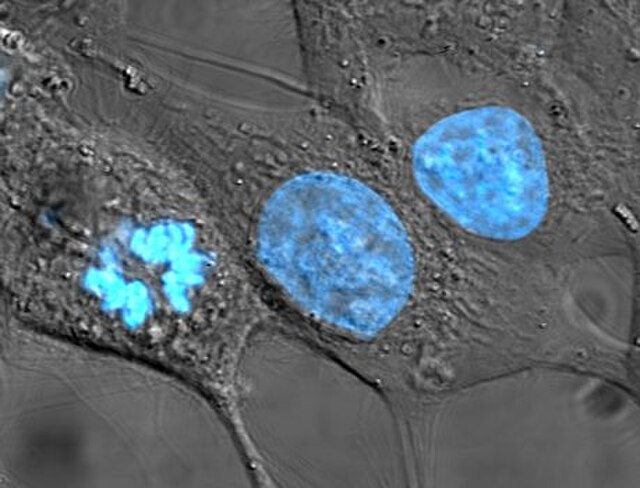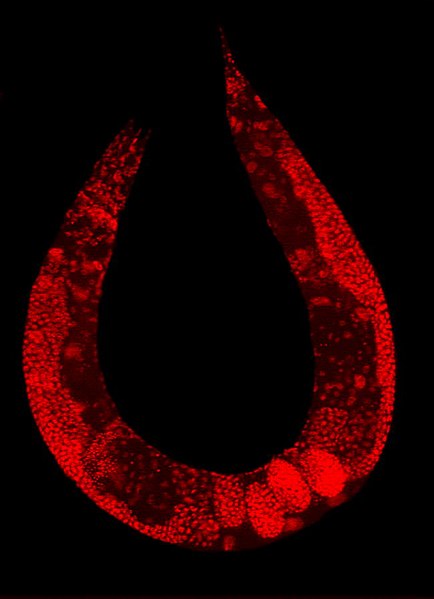The lipid bilayer is a thin polar membrane made of two layers of lipid molecules. These membranes are flat sheets that form a continuous barrier around all cells. The cell membranes of almost all organisms and many viruses are made of a lipid bilayer, as are the nuclear membrane surrounding the cell nucleus, and membranes of the membrane-bound organelles in the cell. The lipid bilayer is the barrier that keeps ions, proteins and other molecules where they are needed and prevents them from diffusing into areas where they should not be. Lipid bilayers are ideally suited to this role, even though they are only a few nanometers in width, because they are impermeable to most water-soluble (hydrophilic) molecules. Bilayers are particularly impermeable to ions, which allows cells to regulate salt concentrations and pH by transporting ions across their membranes using proteins called ion pumps.

TEM image of a bacterium. The furry appearance on the outside is due to a coat of long-chain sugars attached to the cell membrane. This coating helps trap water to prevent the bacterium from becoming dehydrated.
Human red blood cells viewed through a fluorescence microscope. The cell membrane has been stained with a fluorescent dye. Scale bar is 20μm.
Exocytosis of outer membrane vesicles (MV) liberated from inflated periplasmic pockets (p) on surface of human Salmonella 3,10:r:- pathogens docking on plasma membrane of macrophage cells (M) in chicken ileum, for host-pathogen signaling in vivo.
Schematic illustration of the process of fusion through stalk formation.
The cell is the basic structural and functional unit of all forms of life. Every cell consists of cytoplasm enclosed within a membrane; many cells contain organelles, each with a specific function. The term comes from the Latin word cellula meaning 'small room'. Most cells are only visible under a microscope. Cells emerged on Earth about 4 billion years ago. All cells are capable of replication, protein synthesis, and motility.
Onion (Allium cepa) root cells in different phases of the cell cycle (drawn by E. B. Wilson, 1900)
A fluorescent image of an endothelial cell. Nuclei are stained blue, mitochondria are stained red, and microfilaments are stained green.
Human cancer cells, specifically HeLa cells, with DNA stained blue. The central and rightmost cell are in interphase, so their DNA is diffuse and the entire nuclei are labelled. The cell on the left is going through mitosis and its chromosomes have condensed.
Staining of a Caenorhabditis elegans highlights the nuclei of its cells.







